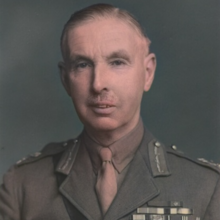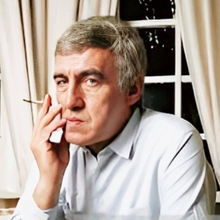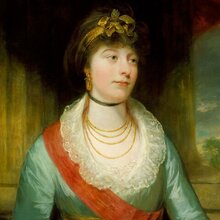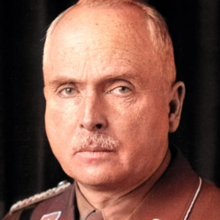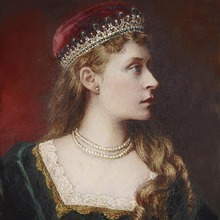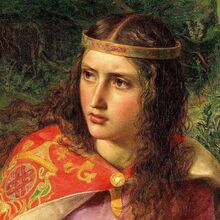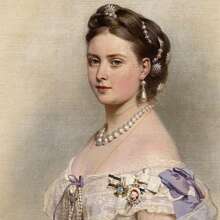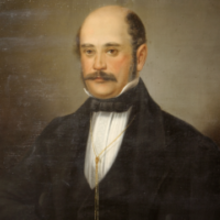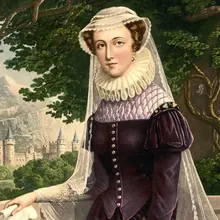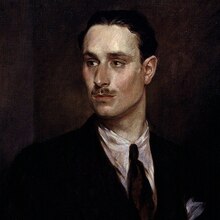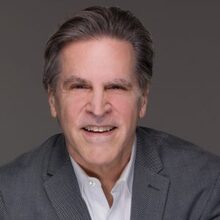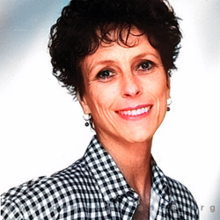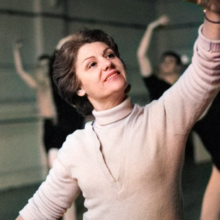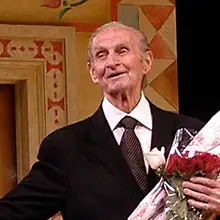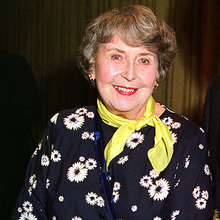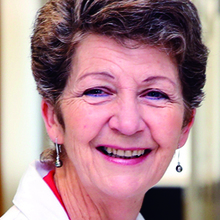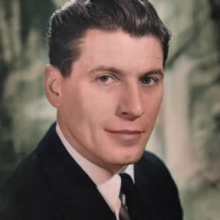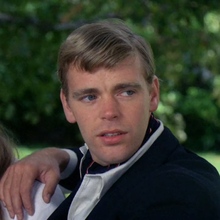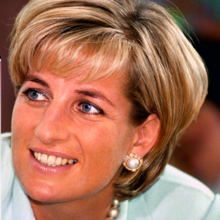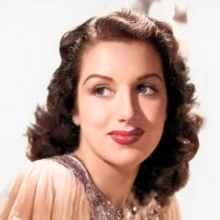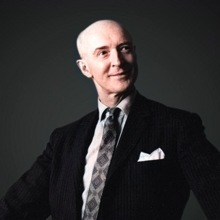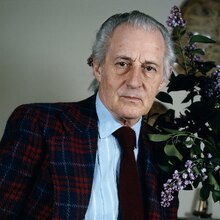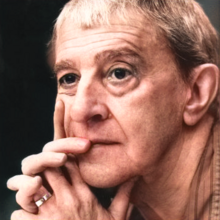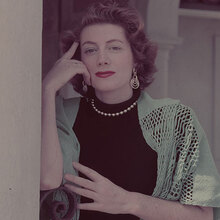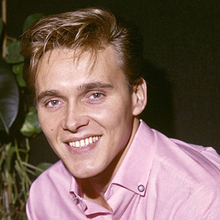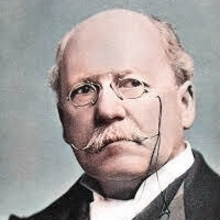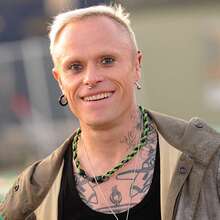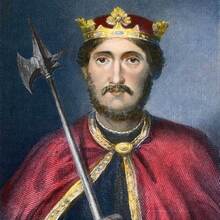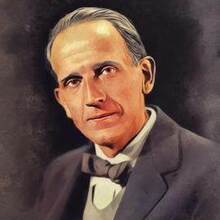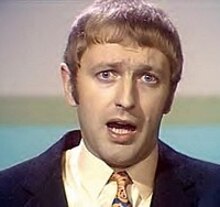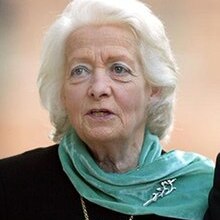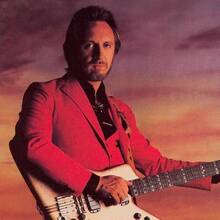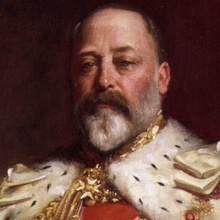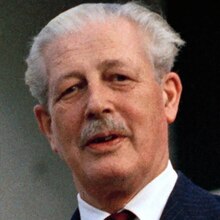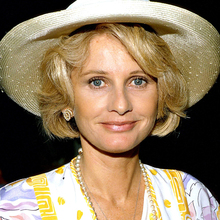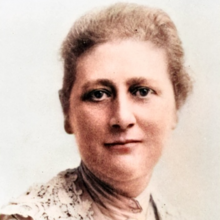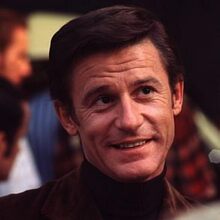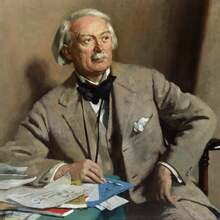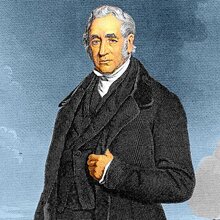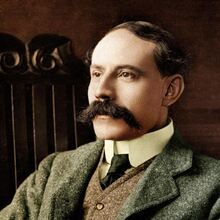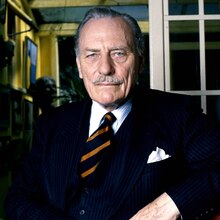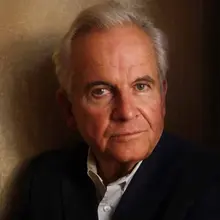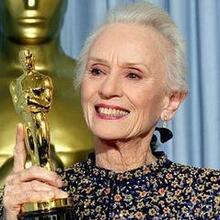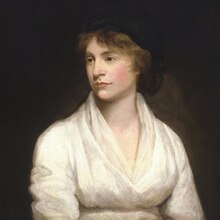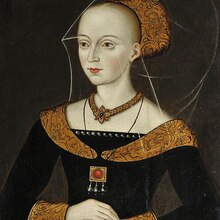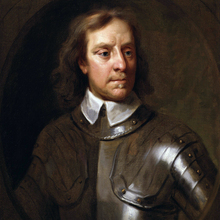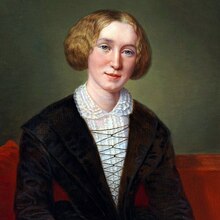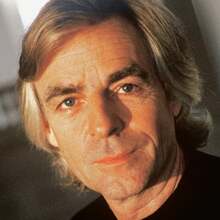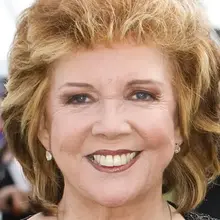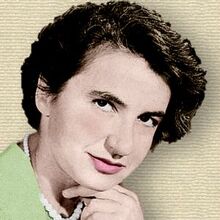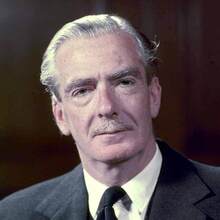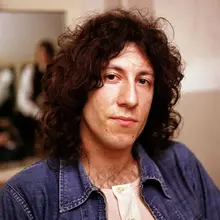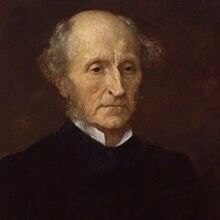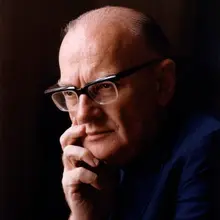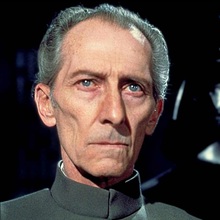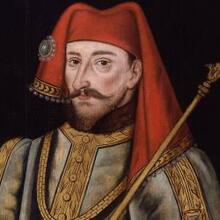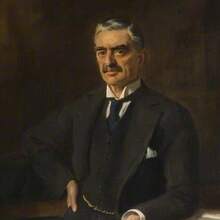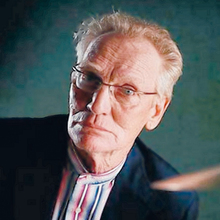 Thurstan of Bayeux
1070 - 1140
Archbishop of York
Thurstan of Bayeux
1070 - 1140
Archbishop of York
 Allama Khalid Mahmood
1925 - 2020
Islamic scholar and jurist
Allama Khalid Mahmood
1925 - 2020
Islamic scholar and jurist
 Stanley Holden
1928 - 2007
Character dancer and choreographer
Stanley Holden
1928 - 2007
Character dancer and choreographer
 Michael Marks
1859 - 1907
Co-founder of Marks & Spencer
Michael Marks
1859 - 1907
Co-founder of Marks & Spencer
 Nazia Hassan
1965 - 2000
Pop singer and songwriter
Nazia Hassan
1965 - 2000
Pop singer and songwriter
 Jill Dorothy Ireland
1936 - 1990
Actress and singer
Jill Dorothy Ireland
1936 - 1990
Actress and singer
 Ali Sastroamidjojo
1903 - 1975
Prime Minister of Indonesia
Ali Sastroamidjojo
1903 - 1975
Prime Minister of Indonesia
 John Greer Ervine
1883 - 1971
Playwright, novelist, biographer
John Greer Ervine
1883 - 1971
Playwright, novelist, biographer
 Isabella of France
1295 - 1358
Queen consort of England and regent of England
Isabella of France
1295 - 1358
Queen consort of England and regent of England
 Christopher Hitchens
1949 - 2011
Author, literary critic
Christopher Hitchens
1949 - 2011
Author, literary critic
 Iskander Mirza
1899 - 1969
First president and last governor-general
Iskander Mirza
1899 - 1969
First president and last governor-general
 George Gordon Byron
1788 - 1824
Poet and laureate
George Gordon Byron
1788 - 1824
Poet and laureate
 Karl Marx
1818 - 1883
Revolutionary socialist, historian
Karl Marx
1818 - 1883
Revolutionary socialist, historian
 Joseph Mallord William Turner
1775 - 1851
Romantic landscape painter, printmaker
Joseph Mallord William Turner
1775 - 1851
Romantic landscape painter, printmaker
 George Elton Mayo
1880 - 1949
Psychologist and sociologist
George Elton Mayo
1880 - 1949
Psychologist and sociologist
 Marian Hemar
1901 - 1972
Writer, songwriter, journalist
Marian Hemar
1901 - 1972
Writer, songwriter, journalist
 Jenny von Westphalen
1814 - 1881
Theatre critic and political activist
Jenny von Westphalen
1814 - 1881
Theatre critic and political activist
 Keith John Moon
1946 - 1978
Drummer for the rock band
Keith John Moon
1946 - 1978
Drummer for the rock band
 Guy Fawkes
1570 - 1606
Conspirator
Guy Fawkes
1570 - 1606
Conspirator
 James Ussher
1581 - 1656
Archbishop of Armagh and Primate of All Ireland
James Ussher
1581 - 1656
Archbishop of Armagh and Primate of All Ireland
 Alexandra of Yugoslavia
1921 - 1993
Queen consort of Yugoslavia
Alexandra of Yugoslavia
1921 - 1993
Queen consort of Yugoslavia
 Walter Wilson Froggatt
1858 - 1937
Entomologist and author of Australian Insects
Walter Wilson Froggatt
1858 - 1937
Entomologist and author of Australian Insects
 Samuel Cunard
1787 - 1865
Founder of the Cunard Line
Samuel Cunard
1787 - 1865
Founder of the Cunard Line
 Andrew Fisher
1856 - 1919
Prime minister of Australia, leader
Andrew Fisher
1856 - 1919
Prime minister of Australia, leader
 Richard I of England
1157 - 1199
King of England and leader of the Third Crusade
Richard I of England
1157 - 1199
King of England and leader of the Third Crusade
 Kerr Grant
1908 - 1983
Physicist and electronics engineer
Kerr Grant
1908 - 1983
Physicist and electronics engineer
 Richard Steele
1672 - 1729
Essayist, dramatist, journalist
Richard Steele
1672 - 1729
Essayist, dramatist, journalist
 Chatichai Choonhavan
1920 - 1998
Politician, Diplomat
Chatichai Choonhavan
1920 - 1998
Politician, Diplomat
 Evelyn Emmet, Baroness Emmet of Amberley
1899 - 1980
Member of Parliament for East Grinstead
Evelyn Emmet, Baroness Emmet of Amberley
1899 - 1980
Member of Parliament for East Grinstead
 Winston Leonard Spencer Churchill
1874 - 1965
Prime Minister of the United Kingdom and leader
Winston Leonard Spencer Churchill
1874 - 1965
Prime Minister of the United Kingdom and leader
 Felicjan Slawoj Skladkowski
1885 - 1962
Prime Minister of Poland
Felicjan Slawoj Skladkowski
1885 - 1962
Prime Minister of Poland
 Vivien Leigh
1913 - 1967
Actress
Vivien Leigh
1913 - 1967
Actress
 Nizar Qabbani
1923 - 1998
Poet, writer, publisher
Nizar Qabbani
1923 - 1998
Poet, writer, publisher
 Farooq Leghari
1940 - 2010
Eighth president of Pakistan ,last general
Farooq Leghari
1940 - 2010
Eighth president of Pakistan ,last general
 Edmund the Martyr
842 - 869
King of East Anglia and Christian martyr
Edmund the Martyr
842 - 869
King of East Anglia and Christian martyr
 Peter Allen Greenbaum
1946 - 2020
Blues rock singer, guitarist
Peter Allen Greenbaum
1946 - 2020
Blues rock singer, guitarist
 Charles Robert Darwin
1809 - 1882
Naturalist, geologist, biologist
Charles Robert Darwin
1809 - 1882
Naturalist, geologist, biologist
 Robert Palmer
1949 - 2003
Singer, songwriter, record producer
Robert Palmer
1949 - 2003
Singer, songwriter, record producer
 Caroline Flack
1979 - 2020
TV presenter
Caroline Flack
1979 - 2020
TV presenter
 William the Conqueror
1028 - 1087
King of England, Duke of Normandy,
William the Conqueror
1028 - 1087
King of England, Duke of Normandy,
 Ghulam Ishaq Khan
1915 - 2006
Seventh president of Pakistan
Ghulam Ishaq Khan
1915 - 2006
Seventh president of Pakistan
 Jamil Bachir
1920 - 1977
Oud player and teacher
Jamil Bachir
1920 - 1977
Oud player and teacher
 Stella Bowen
1893 - 1947
Impressionist painter and war artist
Stella Bowen
1893 - 1947
Impressionist painter and war artist
 Cary Grant
1904 - 1986
Film actor
Cary Grant
1904 - 1986
Film actor
 Oliver Goldsmith
1730 - 1774
Novelist, playwright, poet
Oliver Goldsmith
1730 - 1774
Novelist, playwright, poet
 Boudica
30 - 61
Leader of the Iceni tribe and thest the Romans
Boudica
30 - 61
Leader of the Iceni tribe and thest the Romans
 Harold Godwinson
1022 - 1066
The last crowned Anglo-Saxon king of England
Harold Godwinson
1022 - 1066
The last crowned Anglo-Saxon king of England
 Ganga Ram
1851 - 1927
Civil engineer and architect
Ganga Ram
1851 - 1927
Civil engineer and architect
 John Keats
1795 - 1821
Poet
John Keats
1795 - 1821
Poet
 Charlie Chaplin
1889 - 1977
Comedian, filmmaker, composer
Charlie Chaplin
1889 - 1977
Comedian, filmmaker, composer
 Syd Barrett
1946 - 2006
Co-founder, singer, guitarist
Syd Barrett
1946 - 2006
Co-founder, singer, guitarist
 Carl Maria von Weber
1786 - 1826
Composer, pianist, critic
Carl Maria von Weber
1786 - 1826
Composer, pianist, critic
 Yan kit So
1933 - 2001
Food historian and cookbook author
Yan kit So
1933 - 2001
Food historian and cookbook author
 Thomas Paine
1737 - 1809
Political pamphleteer and activist
Thomas Paine
1737 - 1809
Political pamphleteer and activist
 William Tyndale
1494 - 1536
Biblical translator and Protestant reformer
William Tyndale
1494 - 1536
Biblical translator and Protestant reformer
 John David McAfee
1945 - 2021
Computer programmer
John David McAfee
1945 - 2021
Computer programmer
 William Herschel
1738 - 1822
Founder of sidereal astronomy
William Herschel
1738 - 1822
Founder of sidereal astronomy
 George-Etienne Cartier
1814 - 1873
Father of Confederation
George-Etienne Cartier
1814 - 1873
Father of Confederation
 Peter Cushing
1913 - 1994
Actor known for his roles in Hammer horror films
Peter Cushing
1913 - 1994
Actor known for his roles in Hammer horror films
 Jozef Haller
1873 - 1960
Lieutenant general of the Polish Army
Jozef Haller
1873 - 1960
Lieutenant general of the Polish Army
 Tayo Aderinokun
1955 - 2011
CEO of Guaranty Trust Bank
Tayo Aderinokun
1955 - 2011
CEO of Guaranty Trust Bank
 Chula Chakrabongse
1908 - 1963
Author, Motor-racing enthusiast
Chula Chakrabongse
1908 - 1963
Author, Motor-racing enthusiast
 Monika Dannemann
1945 - 1996
Figure skater and painter
Monika Dannemann
1945 - 1996
Figure skater and painter
 Elizabeth of York
1466 - 1503
Queen consort of England
Elizabeth of York
1466 - 1503
Queen consort of England
 Alfred Hitchcock
1899 - 1980
Film director, producer, and screenwriter
Alfred Hitchcock
1899 - 1980
Film director, producer, and screenwriter
 Prince Philip, Duke of Edinburgh
1921 - 2021
Royal consort of Queen Elizabeth II
Prince Philip, Duke of Edinburgh
1921 - 2021
Royal consort of Queen Elizabeth II
 Honor Blackman
1925 - 2020
Actress and singer
Honor Blackman
1925 - 2020
Actress and singer
 Charles Edward, Duke of Saxe-Coburg and Gotha
1884 - 1954
Duke of Saxe-Coburg and Gotha
Charles Edward, Duke of Saxe-Coburg and Gotha
1884 - 1954
Duke of Saxe-Coburg and Gotha
 J. Paul Getty
1892 - 1976
Businessman
J. Paul Getty
1892 - 1976
Businessman
 Charles II
1630 - 1685
King of England, Scotland and Ireland
Charles II
1630 - 1685
King of England, Scotland and Ireland
 Rudyard Kipling
1865 - 1936
Writer and poet, author of The Jungle Book and Kim
Rudyard Kipling
1865 - 1936
Writer and poet, author of The Jungle Book and Kim
 Zygmunt Bauman
1925 - 2017
Sociologist and philosopher
Zygmunt Bauman
1925 - 2017
Sociologist and philosopher
 Albert Finney
1936 - 2019
Actor of stage and screen
Albert Finney
1936 - 2019
Actor of stage and screen
 Elizabeth I
1533 - 1603
Queen of England, Elizabethan era
Elizabeth I
1533 - 1603
Queen of England, Elizabethan era
 Laurence Olivier
1907 - 1989
Actor and director
Laurence Olivier
1907 - 1989
Actor and director
 Remi Oyo
1952 - 2014
Journalist and presidential spokesperson
Remi Oyo
1952 - 2014
Journalist and presidential spokesperson
 Maqbool Fida Husain
1915 - 2011
Modernist painter and filmmaker
Maqbool Fida Husain
1915 - 2011
Modernist painter and filmmaker
 Yehudi Menuhin
1916 - 1999
violinist and conductor
Yehudi Menuhin
1916 - 1999
violinist and conductor
 King Arthur
5 - 6
Leader
King Arthur
5 - 6
Leader
 Edward Elgar
1857 - 1934
Composer of orchestral and choral works
Edward Elgar
1857 - 1934
Composer of orchestral and choral works
 Andrzej Panufnik
1914 - 1991
Composer and conductor
Andrzej Panufnik
1914 - 1991
Composer and conductor
 George Orwell
1903 - 1950
Writer, novelist, essayist, and critic
George Orwell
1903 - 1950
Writer, novelist, essayist, and critic
 Harry Brogan
1904 - 1979
Actor
Harry Brogan
1904 - 1979
Actor
 Dinu Patriciu
1950 - 2014
Businessman, Politician, Architect
Dinu Patriciu
1950 - 2014
Businessman, Politician, Architect
 John Wesley
1703 - 1791
Theologian, evangelist, and founder of Methodism
John Wesley
1703 - 1791
Theologian, evangelist, and founder of Methodism
 Adelaide of Saxe-Meiningen
1792 - 1849
Queen consort of the United Kingdom and Hanover
Adelaide of Saxe-Meiningen
1792 - 1849
Queen consort of the United Kingdom and Hanover
 Joseph Wayas
1941 - 2021
Senate President of Nigeria
Joseph Wayas
1941 - 2021
Senate President of Nigeria
 Walter Gotell
1924 - 1997
James Bond films
Walter Gotell
1924 - 1997
James Bond films
 Anne Boleyn
1500 - 1536
Queen of England and second wife of Henry VIII
Anne Boleyn
1500 - 1536
Queen of England and second wife of Henry VIII
 Joan Fontaine
1917 - 2013
Hitchcock's leading lady
Joan Fontaine
1917 - 2013
Hitchcock's leading lady
 Eric Hobsbawm
1917 - 2012
Historian of industrial capitalism, socialism
Eric Hobsbawm
1917 - 2012
Historian of industrial capitalism, socialism
 Charlotte of Mecklenburg-Strelitz
1744 - 1818
Queen consort of Great Britain and Ireland
Charlotte of Mecklenburg-Strelitz
1744 - 1818
Queen consort of Great Britain and Ireland
 Matila Ghyka
1881 - 1965
philosopher
Matila Ghyka
1881 - 1965
philosopher
 Teki Bicoku
1926 - 2009
Editor of Drita and The Adriatic Review
Teki Bicoku
1926 - 2009
Editor of Drita and The Adriatic Review
 Ronald Belford Scott
1946 - 1980
Singer and songwriter of AC,DC
Ronald Belford Scott
1946 - 1980
Singer and songwriter of AC,DC
 Kenneth MacMillan
1929 - 1992
Ballet choreographer and director
Kenneth MacMillan
1929 - 1992
Ballet choreographer and director
 John Logie Baird
1888 - 1946
Inventor and engineer of the mechanical television
John Logie Baird
1888 - 1946
Inventor and engineer of the mechanical television
 George Stephenson
1781 - 1848
Railroad locomotive inventor
George Stephenson
1781 - 1848
Railroad locomotive inventor
 Tomasz Arciszewski
1877 - 1955
Prime Minister of Poland in exile
Tomasz Arciszewski
1877 - 1955
Prime Minister of Poland in exile
 Constantin Silvestri
1913 - 1969
Conductor, Composer
Constantin Silvestri
1913 - 1969
Conductor, Composer
 Henrik Kacser
1918 - 1995
Biochemist
Henrik Kacser
1918 - 1995
Biochemist
 Anne Stuart
1665 - 1714
Queen of Great Britain and Ireland
Anne Stuart
1665 - 1714
Queen of Great Britain and Ireland
 Brian Jones
1942 - 1969
Multi-instrumentalist
Brian Jones
1942 - 1969
Multi-instrumentalist
 Lo Hsiang lin
1906 - 1978
Historian and educator
Lo Hsiang lin
1906 - 1978
Historian and educator
 Chatin Sarachi
1903 - 1974
Painter and First Secretary of Albanian Embassy
Chatin Sarachi
1903 - 1974
Painter and First Secretary of Albanian Embassy
 Michael Gough
1916 - 2011
Actor
Michael Gough
1916 - 2011
Actor
 Harold Macmillan
1894 - 1986
Prime Minister of the United Kingdom (1957-1963)
Harold Macmillan
1894 - 1986
Prime Minister of the United Kingdom (1957-1963)
 Robert Baden-Powell
1857 - 1941
Founder of Scouting
Robert Baden-Powell
1857 - 1941
Founder of Scouting
 James Simon Wallis Hunt
1947 - 1993
Formula One racing driver, 1976 World Champion
James Simon Wallis Hunt
1947 - 1993
Formula One racing driver, 1976 World Champion
 Yinka Craig
1948 - 2008
Sports commentator and analyst
Yinka Craig
1948 - 2008
Sports commentator and analyst
 Clive Staples Lewis
1898 - 1963
Author
Clive Staples Lewis
1898 - 1963
Author
 Leonid Pasternak
1862 - 1945
Painter, illustrator
Leonid Pasternak
1862 - 1945
Painter, illustrator
 Puey Ungphakorn
1916 - 1999
Economist, Rector
Puey Ungphakorn
1916 - 1999
Economist, Rector
 Jill Bennett
1931 - 1990
Actress
Jill Bennett
1931 - 1990
Actress
 Edouard Percy Cranwill Girouard
1867 - 1932
Railway builder and colonial administrator
Edouard Percy Cranwill Girouard
1867 - 1932
Railway builder and colonial administrator
 Savitri Devi
1905 - 1982
Proponent of Nazism and Hinduism
Savitri Devi
1905 - 1982
Proponent of Nazism and Hinduism
 Richard Harris
1930 - 2002
actor and singer
Richard Harris
1930 - 2002
actor and singer
 Edward I Plantagenet
1239 - 1307
King of England and founder
Edward I Plantagenet
1239 - 1307
King of England and founder
 William Wordsworth
1770 - 1850
Poet and laureate
William Wordsworth
1770 - 1850
Poet and laureate
 Eric Morecambe
1926 - 1984
Comedy duo Morecambe and Wise
Eric Morecambe
1926 - 1984
Comedy duo Morecambe and Wise
 Sid Vicious
1957 - 1979
Bassist for the Sex Pistols
Sid Vicious
1957 - 1979
Bassist for the Sex Pistols
 Richard William Wright
1943 - 2008
Keyboardist and co-founder of Pink Floyd
Richard William Wright
1943 - 2008
Keyboardist and co-founder of Pink Floyd
 Elizabeth Bowes-Lyon
1900 - 2002
Queen
Elizabeth Bowes-Lyon
1900 - 2002
Queen
 Antony Tudor
1908 - 1987
Ballet choreographer, teacher and dancer
Antony Tudor
1908 - 1987
Ballet choreographer, teacher and dancer
 Naim Dangoor
1914 - 2015
Founder of The Exilarch's Foundation
Naim Dangoor
1914 - 2015
Founder of The Exilarch's Foundation
 Mohammed Inuwa Wushishi
1940 - 2021
Chief of Army Staff
Mohammed Inuwa Wushishi
1940 - 2021
Chief of Army Staff
 Louis-Andre de Grimaldi
1736 - 1804
Bishop of Le Mans and Noyon, Peer of France
Louis-Andre de Grimaldi
1736 - 1804
Bishop of Le Mans and Noyon, Peer of France
 Arthur Ignatius Conan Doyle
1859 - 1930
Writer and physician
Arthur Ignatius Conan Doyle
1859 - 1930
Writer and physician
 Arthur Ernest Percival
1887 - 1966
British Army officer
Arthur Ernest Percival
1887 - 1966
British Army officer
 Thomas Edward Lawrence
1888 - 1935
Archaeologist and military officer
Thomas Edward Lawrence
1888 - 1935
Archaeologist and military officer
 Thomas Stearns Eliot
1888 - 1965
Poet, essayist, publisher, playwright
Thomas Stearns Eliot
1888 - 1965
Poet, essayist, publisher, playwright
 Rosalind Elsie Franklin
1920 - 1958
Chemist and x-ray crystallographer
Rosalind Elsie Franklin
1920 - 1958
Chemist and x-ray crystallographer
 Victoria Adelaide Mary Louisa
1840 - 1901
German Empress and Queen of Prussia
Victoria Adelaide Mary Louisa
1840 - 1901
German Empress and Queen of Prussia
 Samuel Alexander
1859 - 1938
Metaphysics, philosophy of religion
Samuel Alexander
1859 - 1938
Metaphysics, philosophy of religion
 Mustapha Karkouti
1943 - 2020
Journalist and media consultant
Mustapha Karkouti
1943 - 2020
Journalist and media consultant
 George Frideric Handel
1685 - 1759
composer
George Frideric Handel
1685 - 1759
composer
 Wendy Toye
1917 - 2010
Dancer, stage and film director and actress
Wendy Toye
1917 - 2010
Dancer, stage and film director and actress
 Diana Rigg
1938 - 2020
Actress of stage and screen
Diana Rigg
1938 - 2020
Actress of stage and screen
 Walter Richard Sickert
1860 - 1942
Post-Impressionist painter and printmaker
Walter Richard Sickert
1860 - 1942
Post-Impressionist painter and printmaker
 Ljubo Sirc
1920 - 2016
Economist
Ljubo Sirc
1920 - 2016
Economist
 Judith Kerr
1923 - 2019
Children's literature
Judith Kerr
1923 - 2019
Children's literature
 Catherine of Aragon
1485 - 1536
First wife of Henry VIII and Queen of England
Catherine of Aragon
1485 - 1536
First wife of Henry VIII and Queen of England
 John Cornelius O'Callaghan
1805 - 1883
Historian and journalist
John Cornelius O'Callaghan
1805 - 1883
Historian and journalist
 Dev Anand
1923 - 2011
Actor, director and producer of Hindi cinema
Dev Anand
1923 - 2011
Actor, director and producer of Hindi cinema
 Roald Dahl
1916 - 1990
Author of children’s books and short stories
Roald Dahl
1916 - 1990
Author of children’s books and short stories
 Ada Lovelace
1815 - 1852
Mathematician and writer
Ada Lovelace
1815 - 1852
Mathematician and writer
 Billy Fury
1940 - 1983
Rock and roll singer
Billy Fury
1940 - 1983
Rock and roll singer
 Peter O'Toole
1932 - 2013
Actor of stage and screen
Peter O'Toole
1932 - 2013
Actor of stage and screen
 Umaru Dikko
1936 - 2014
Transport minister
Umaru Dikko
1936 - 2014
Transport minister
 Margaret Hilda Thatcher
1925 - 2013
Prime Minister of the United Kingdom
Margaret Hilda Thatcher
1925 - 2013
Prime Minister of the United Kingdom
We Need -- admin in



